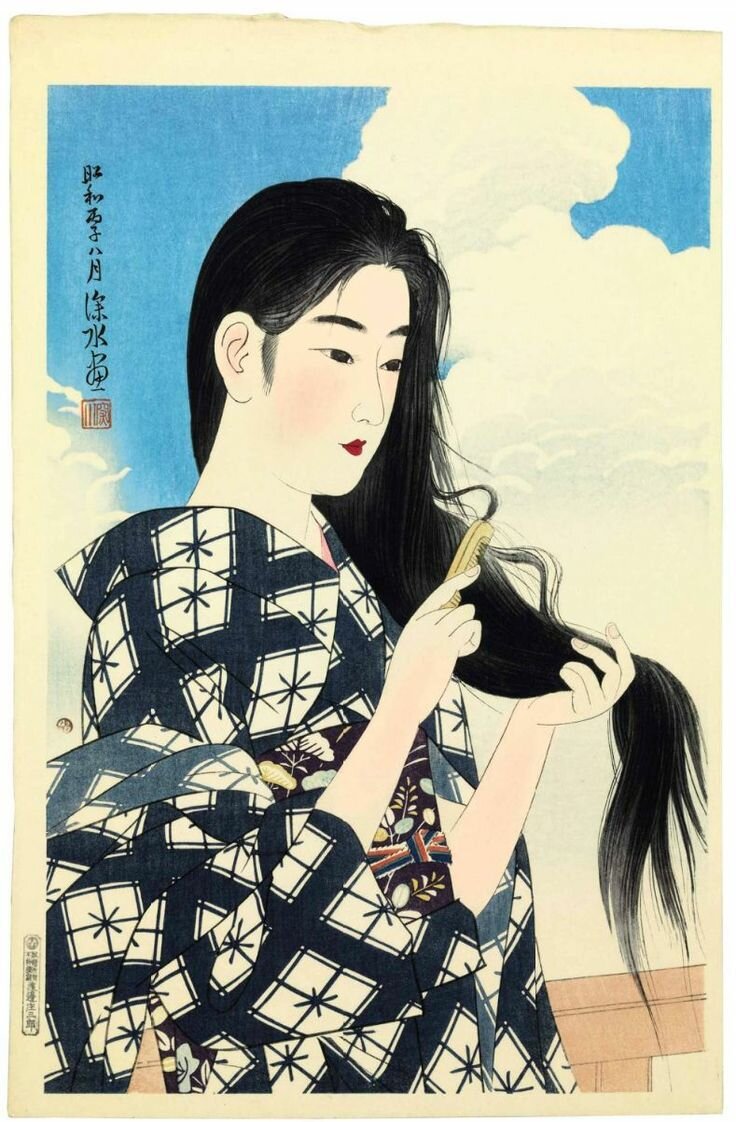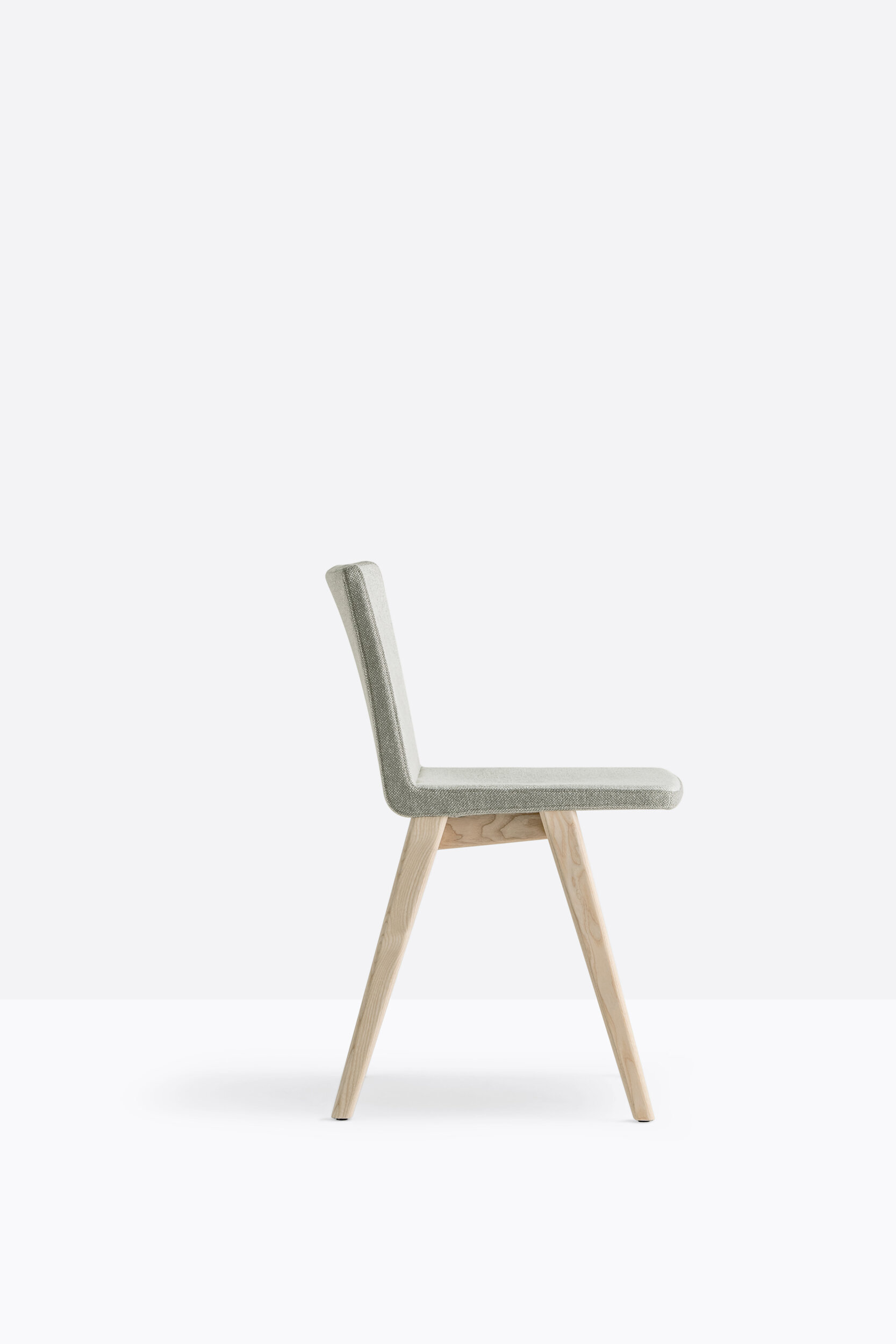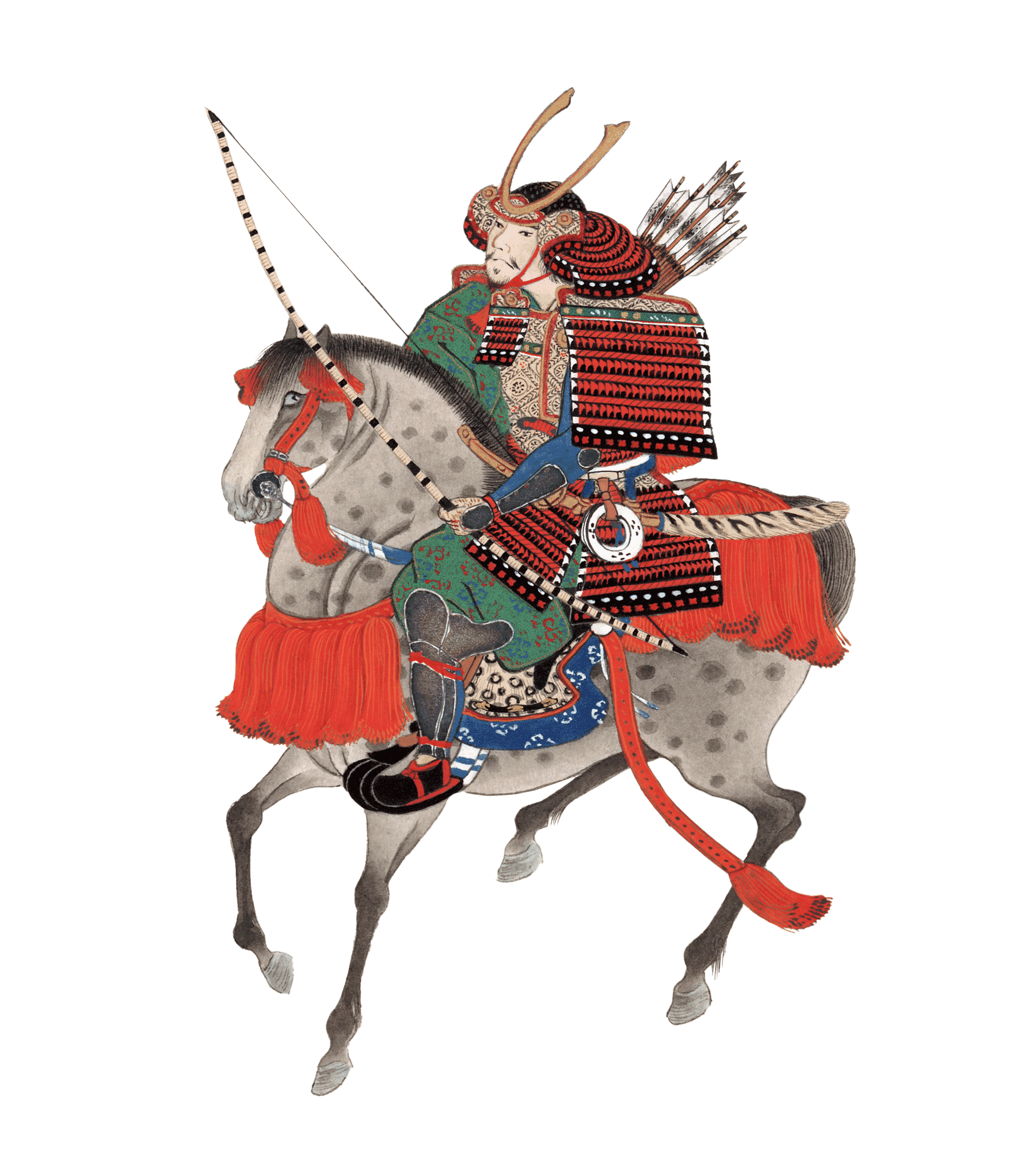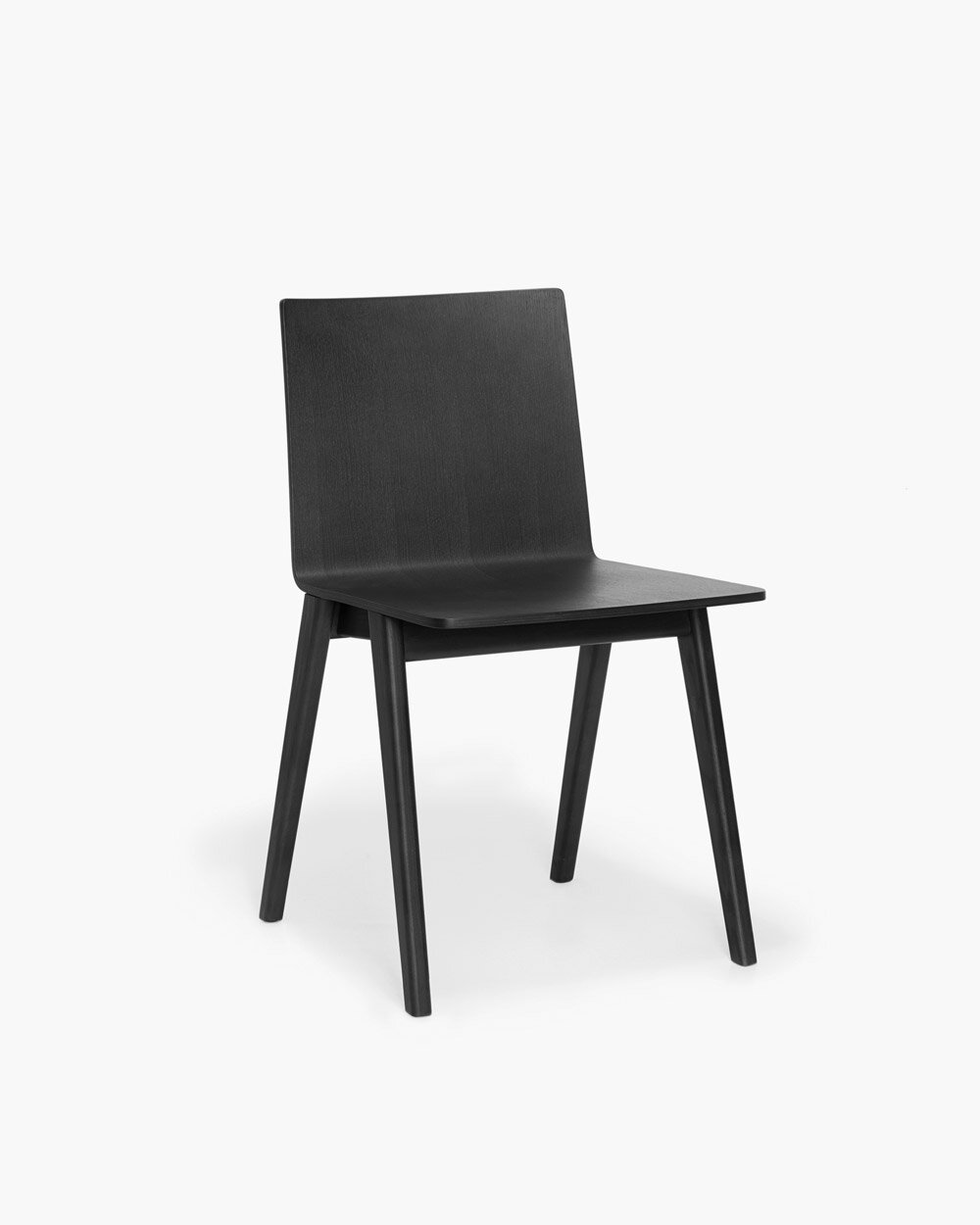
Osaka
Pedrali - 2015
The ideogram chair.
An ideogram is a two-dimensional sign that contains a depth of meaning. So the Osaka, which at first sight appears described by rigorous and two-dimensional geometric features, reveals to the person who sits there unexpected depth and comfort. The backrest has a curvature that welcomes the person and descends and thins out to give lumbar support. The seat is ergonomically shaped.
More ideograms on pedrali.com
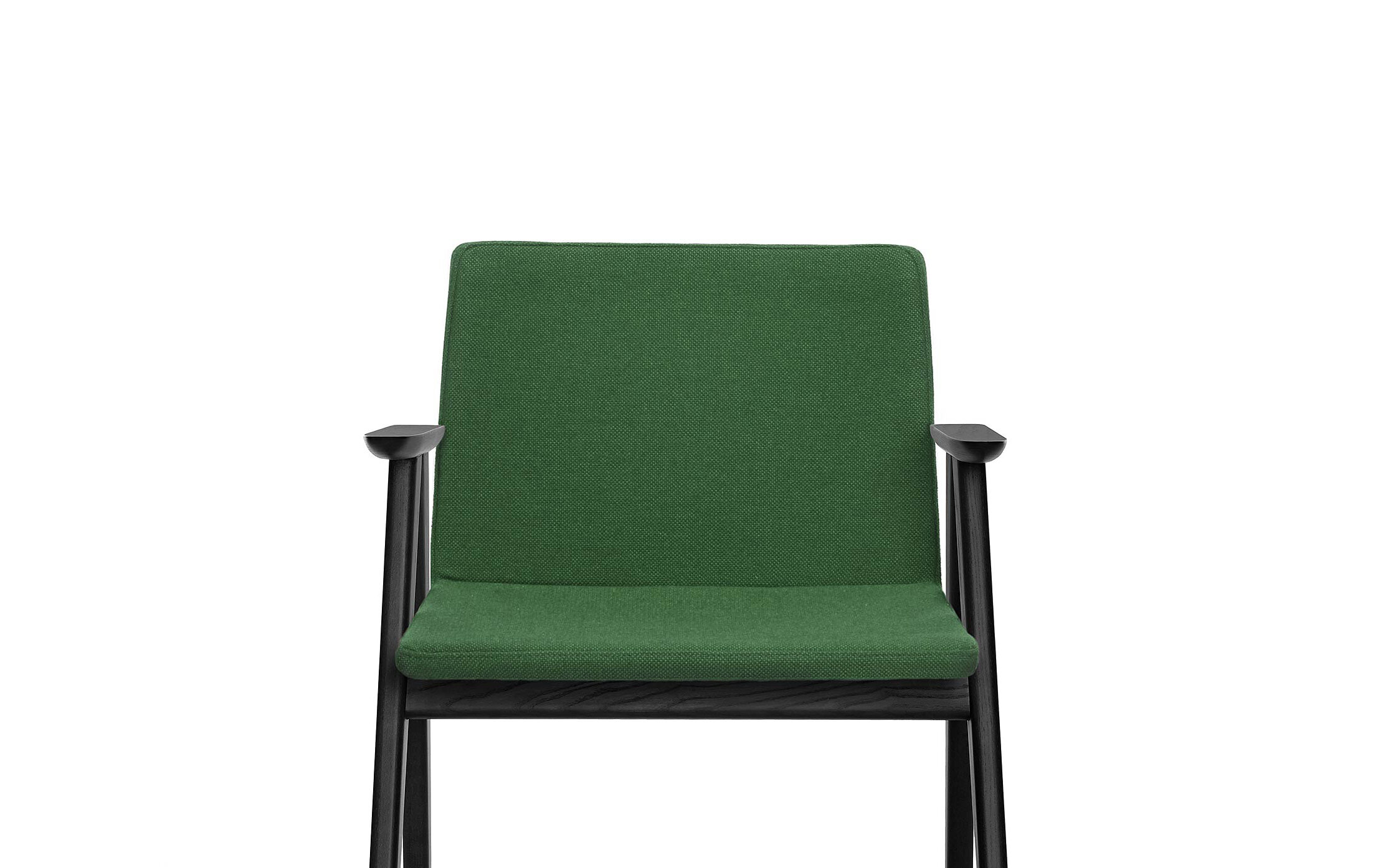
Is flawless.
Each project begins with a research that explores the world of shapes, technologies or materials. Osaka was born from research on the plywood bending technology. We managed to get the sharpest fold possible and we wanted to use it as a connection between the seat and the back of a shell. The first experiments led to a session that looked like a folded sheet. We did not yet have a basic structure that supported it, but the effect we wanted to have was clear: the body had to be cut out so that the edges of the seat and back seemed straight lines.
Graphics to touch.
The armrest is a distinctive element of the Osaka family. Its shape looks like the hull of a boat. For this reason it indicates a direction, the front one, which is the same one that is signaled by the convergence of the body and the structural beams. The upper surface of the armrest is perfectly flat, in accordance with the graphic effect of the other geometric shapes that make up the object. The contrast between the flat surface and the modeled body seems to mirror a relationship between artifice and nature. The two armrests seem almost the parts of a single element, perhaps a seed, divided into two.
WANDERLUST
Calligraphic sign.
The geometric rigor of the shell suggests the shape of the legs in solid ash. Trapezoidal legs, whose section variations recall the approximation of the brush stroke, an almost calligraphic sign.
Some lines spontaneously recall others, following a sequence that is not codified and yet recognizable as responding to a logic. Perhaps this happens by affinity with forms of nature, or with visual codes transversal to various cultures and therefore universal. Thus the diagonal lines of the Osaka legs have an inclination that corresponds to the opening angle described by the edges of the shell. The structural elements under the seat are also shaped so that in the side view they describe an angle similar to that of the trapezoids of the legs. The alternation of the diagonals, rotating around a hypothetical visual center, creates an effect of strong dynamism.

